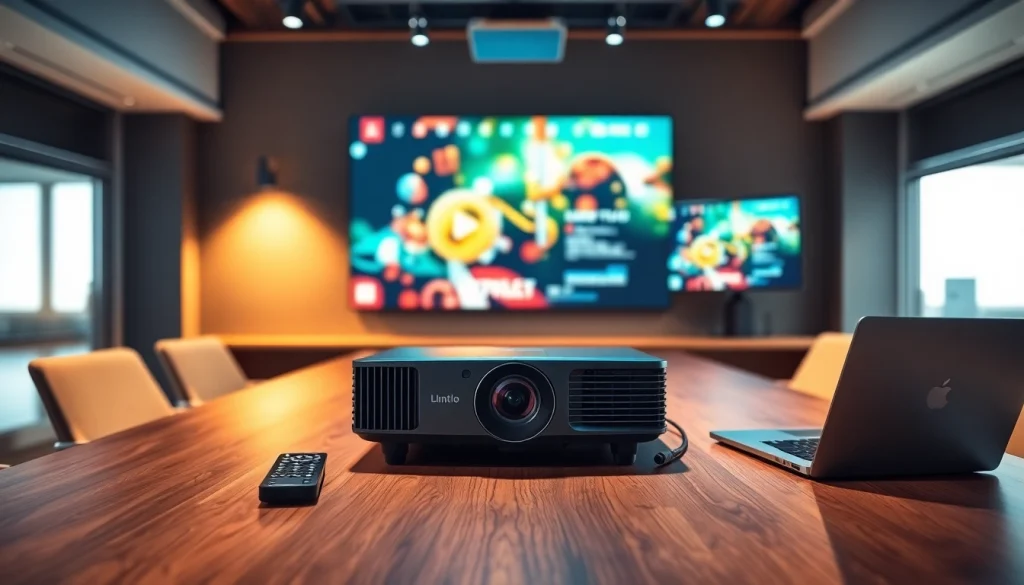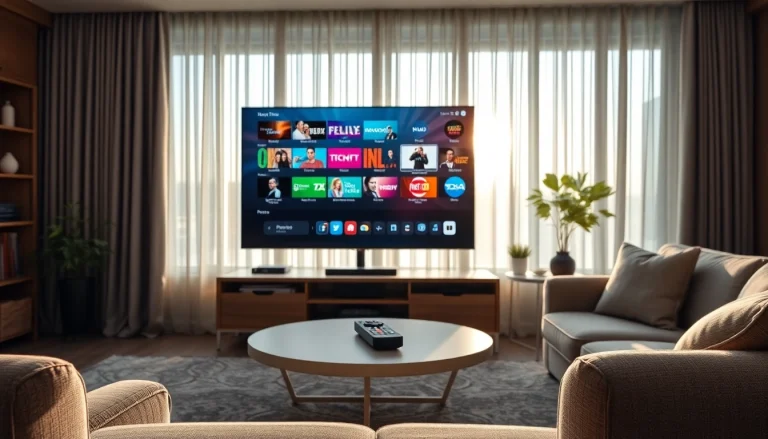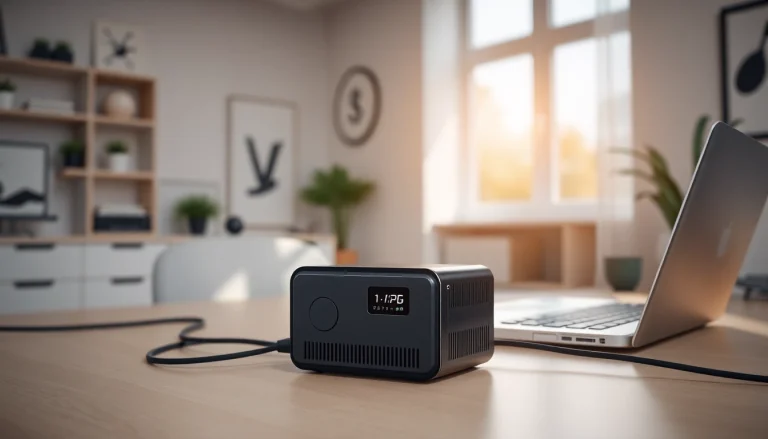
Understanding the Basics of Projector Technology
In today’s digitally driven world, Projector technology serves as a cornerstone for home entertainment, professional presentations, and educational tools. However, many still find themselves unfamiliar with the vast landscape of projector technology, its varied types, and how these devices can enhance viewing experiences. To make informed decisions, it’s essential to understand the fundamentals behind this versatile technology.
What Is a Projector?
A projector is an optical device that takes images generated by a computer or other source and projects them onto a surface, typically a screen or wall. This device is capable of displaying large-scale images for various purposes ranging from business presentations to home cinema experiences. With the development of advanced technologies, today’s projectors can deliver enhanced image quality, better color accuracy, and increased portability. Understanding how projectors work are foundational to utilizing them effectively.
Key Features of Projectors
When evaluating different projector models, it’s crucial to consider key features that impact performance and usability:
- Brightness: Measured in lumens, brightness is important for image clarity in different lighting conditions.
- Resolution: Higher resolution contributes to a clearer, more detailed image. Common resolutions include 720p, 1080p, and 4K.
- Contrast Ratio: This ratio indicates the difference between the darkest and lightest parts of an image, affecting depth and detail.
- Connectivity Options: Understanding available input methods (HDMI, USB, VGA) is essential for compatibility with your devices.
- Portability: Consider size and weight for easy installation and movement, especially in setups requiring frequent relocation.
Types of Projectors Available
There are several types of projectors designed for specific needs and environments:
- DLP Projectors: Utilizing a Digital Light Processing chip, these projectors excel in color accuracy and brightness.
- LCD Projectors: Liquid Crystal Display projectors offer sharp images with excellent color reproduction.
- LED Projectors: Ideal for portable setups, LED projectors are energy-efficient and have longer lifespans.
- Laser Projectors: These projectors provide high brightness and are suitable for both large venues and home cinema.
- 4K Projectors: Catering to high-definition needs, 4K projectors deliver exceptional image quality and details.
Choosing the Right Projector for Your Needs
Selecting the right projector can be daunting given the multitude of options available. This section will guide you through critical factors to ensure you make an informed choice that aligns with your specific requirements.
Factors to Consider When Selecting a Projector
To narrow down your options, consider these factors:
- Purpose: Determine whether the projector is intended for home theaters, presentations, or educational settings.
- Environment: Assess the room size, available lighting, and distance from the projection surface.
- Budget: Establish a budget that incorporates not just the projector but related costs such as screen and accessories.
- Reviews and Brand Reputation: Research reviews and industry reputation to gauge product performance and customer satisfaction.
Comparing Different Projector Brands
While every projector brand offers unique features, comparing brands based on performance, support, and warranty is essential. Seek peer recommendations and examine user feedback to build a reliable understanding of your options. Look for brands recognized for innovation, quality, and value.
Understanding Projector Specifications
Interpreting projector specifications can sometimes be confusing. Here are crucial terms to understand:
- Aspect Ratio: The ratio of width to height of the projected image (e.g., 16:9 for widescreen content).
- Throw Ratio: The ratio of the distance from the lens to the width of the image helps determine placement.
- Input Lag: Important for gaming, lower input lag improves responsiveness.
Setting Up Your Projector Effectively
After selecting the right projector, the next step is efficient setup for an optimal viewing experience. Here are guidelines to help you achieve the best outcome.
Optimal Placement for Maximum Impact
Finding the ideal position for your projector is vital. Here are steps to guide you:
- Determine the Throw Distance: Calculate how far the projector needs to be from the screen based on the throw ratio.
- Measure Screen Height: Position the projector at an appropriate height for the screen for a complete view without obstruction.
- Adjust for Keystone Correction: If necessary, use the projector’s keystone correction feature to adjust image distortion.
Connecting Devices to Your Projector
Ensure successful content display by knowing how to connect your devices:
- HDMI: For high-definition video and audio.
- VGA: Commonly used for laptops; check for compatibility.
- Wireless Connections: Many projectors now offer wireless casting options for smooth presentations.
Calibrating Your Projector for Best Results
Calibration is crucial for achieving optimal picture quality:
- Adjust Brightness and Contrast: Balance these settings according to the surrounding light conditions.
- Color Calibration: Utilize built-in tools or calibration disks to achieve natural color representation.
- Sharpness Adjustment: Fine-tune image sharpness to avoid excess artifacts or blurriness.
Maintaining Your Projector for Longevity
Regular maintenance is essential to enhance projector longevity. This section provides insights on how to keep your projector operating optimally.
Regular Cleaning and Care Tips
Dust accumulation can impact performance. To maintain your device:
- Clean the Lens: Use a microfiber cloth and lens cleaner to remove dust and smudges.
- Check Air Filters: Clean or replace air filters periodically to ensure proper ventilation.
- Wipe Down the Housing: Regularly clean the outer casing to prevent dust buildup.
Replacing Bulbs and Other Components
Projector bulbs project light and have a limited lifespan. Monitor usage and replace bulbs as needed:
- Know the Lifespan: Most projector bulbs last between 2000 to 5000 hours.
- Replacement Indicators: Many projectors will alert you when a bulb is nearing the end of its lifespan.
- Follow Instructions: Always consult the manual for proper replacement procedures to avoid damage.
Software Updates and Performance Optimization
Many modern projectors have software that can be updated for improved performance:
- Check for Firmware Updates: Visit the manufacturer’s website periodically for updates that could enhance features or fix bugs.
- Adjust Performance Settings: Optimize projector settings based on usage scenario (e.g., presentations, watching movies).
Exploring Advanced Projector Applications
Projectors have expanded far beyond traditional roles, making them versatile tools in various applications. Here we explore innovative uses of projectors across different sectors.
Using Projectors for Home Theater Systems
For home theater enthusiasts, projectors offer an impressive alternative to traditional televisions. Here are elements to consider:
- Screen Size: Achieve a cinematic effect by opting for a large screen that fits your room.
- Surround Sound Integration: Enhance the audio experience with surround sound systems.
- Theming & Ambiance: Consider the lighting and decor that integrate with the projector setup.
Projectors in Education: Enhancing Learning Experiences
In educational settings, projectors are vital teaching tools that enhance engagement.
- Interactive Learning: Use interactive projectors to facilitate hands-on learning by allowing students to engage directly with projected content.
- Visual Learning: Provide visual aids that simplify complex subjects, fostering better understanding and retention.
- Flexibility in Format: Adapt presentations to various instructional styles, from lectures to collaborative group work.
Innovative Uses of Projectors in Marketing
In marketing, projectors are being creatively employed to capture audiences through immersive experiences:
- Interactive Displays: Utilize projectors with motion sensors to create engaging environments in retail and exhibitions.
- Event Enhancements: Projectors can amplify brand messages during events, ensuring visibility on large scales.
- Augmented Reality: By blending physical and digital environments, marketers use projectors to enhance product presentations and demos.





